Call for entries: The 14th Architizer A+Awards celebrates architecture's new era of craft. Apply for publication online and in print by submitting your projects before the Main Entry Deadline on December 12th!
The works of Ljubljana-based architecture firm Enota, headed by Dean Lah and Milan Tomac, are easily recognized by their polygonal forms and neutral palettes. This architectural language, however, is more than just a signature style. The forms are often derived from systems in nature: organizational patterns, movements, indigenous dwellings, and so on. While these may appear very complex at first glance, they are usually simpler when one gets to their core.
“We believe that there are some elements that all of us understand without some pre knowledge, some education. We kind of just get them, you know,” said Dean Lah, the firm’s Co-founder and Partner. “This is what we try to search and like to implement in our architectures solutions.”
And this inspiration also extends to their design process. Lah said that one could assume that everything beautiful in nature is a result of an error. Similarly, in practice, the solutions to errors are what bring about unique typologies and design strategies. With this understanding, Enota’s clever team breaks up the project into different parts, working on each separately. Once they reach an acceptable stage of development, the designers reconvene and begin working to integrate the parts, reconstituting them into a new whole.
“And as you can imagine, nothing really fits. So, we look into it and we search for this biggest error or the biggest problem that we might have, and we take this problem and start from there again,” said Lah. “Basically, we surprise ourselves with something that might we might not have expected before and then we try to reshape the whole project around this problem.”
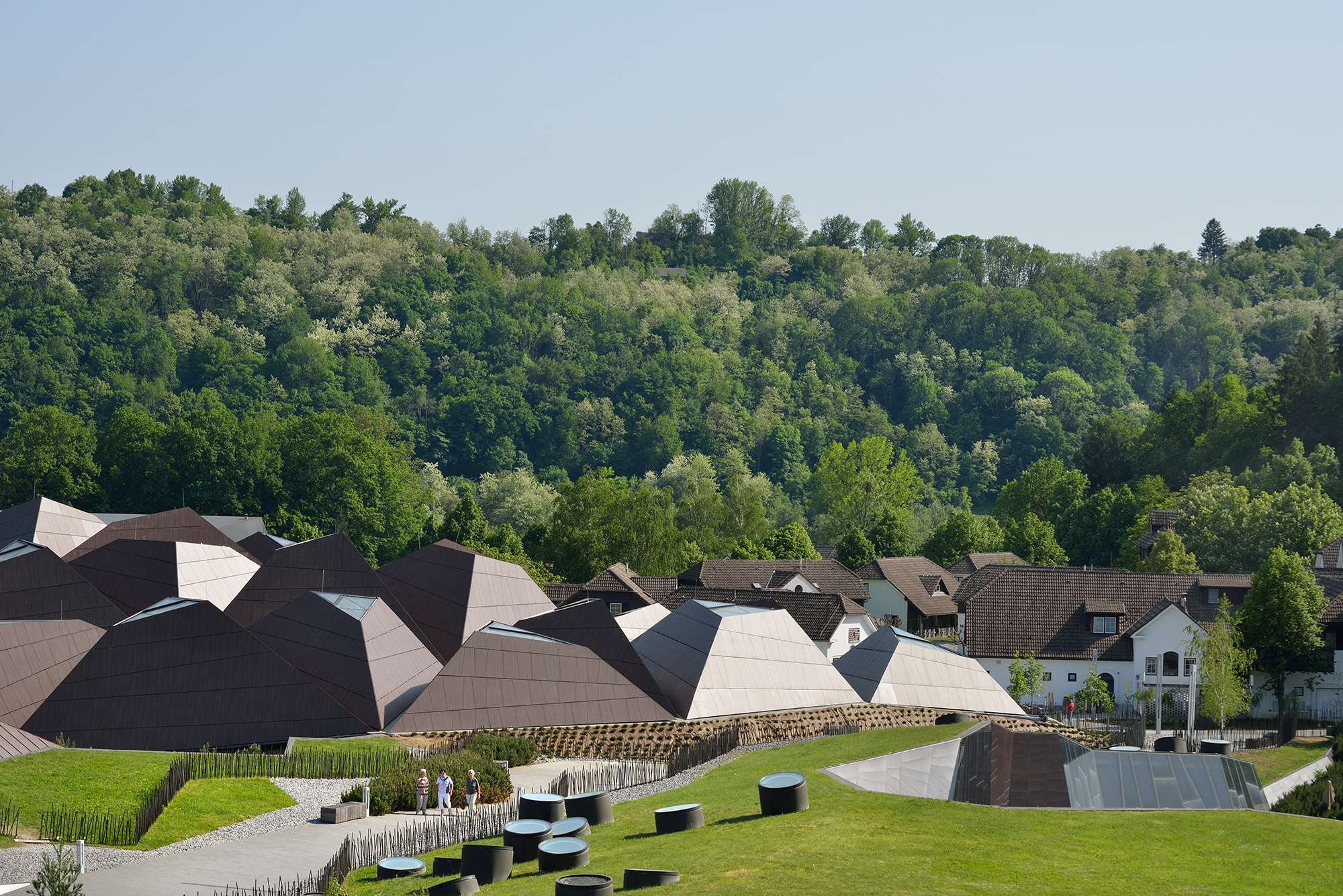
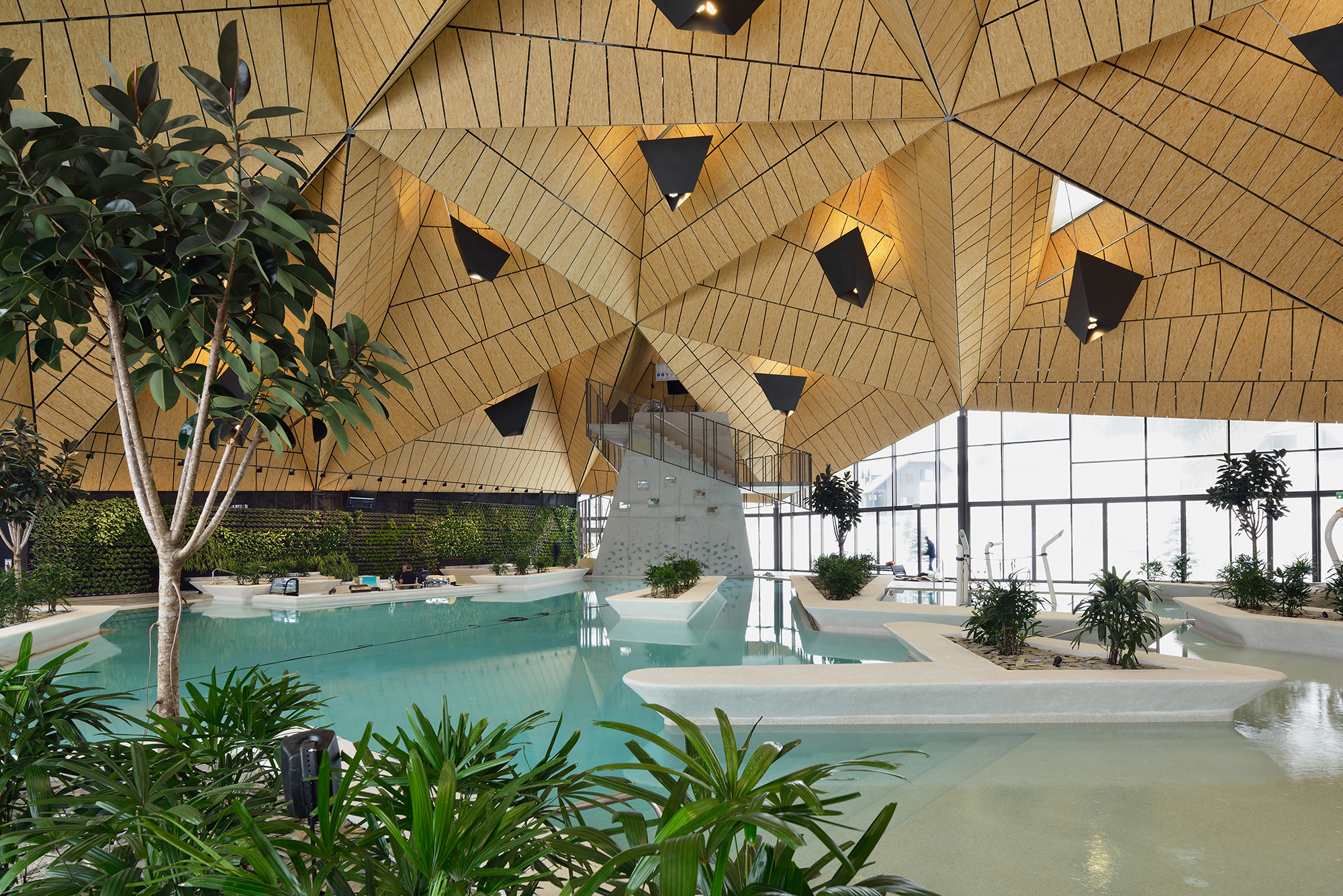
Termalija Family Wellness by Enota, Šmarje pri Jelšah, Slovenia | Photos by Miran Kambič
One of their most iconic projects is Termalija Family Wellness in Podčetrtek, Slovenia. This is the fourth and final building in the series of projects they have built in the Terme Olimia complex. Each project was built without the knowledge of a future opportunity and so, they are all different in language. The latest addition looks like a series of small polygonal hills that emerge from the earth. The shapes and colors of these roofs reference the vernacular architecture in that region and were meant to blend in better with the landscape.
“Buildings, in my opinion, are basically big piles of bricks if you simplify them,” shared Lah. “We are taking ordinary buildings but our piles tend to look a bit different.”
The large roof covering the pool is broken up into smaller forms to prevent it from taking over the landscape around it. This geometry also helps eliminate the need for supports and helps the roof span over the entire pool area. The measurements of the individual trapezoidal fragments were governed by the size of the wooden boards available to maximize the use of material, reduce waste and ultimately reduce costs without compromising the overall aesthetic.
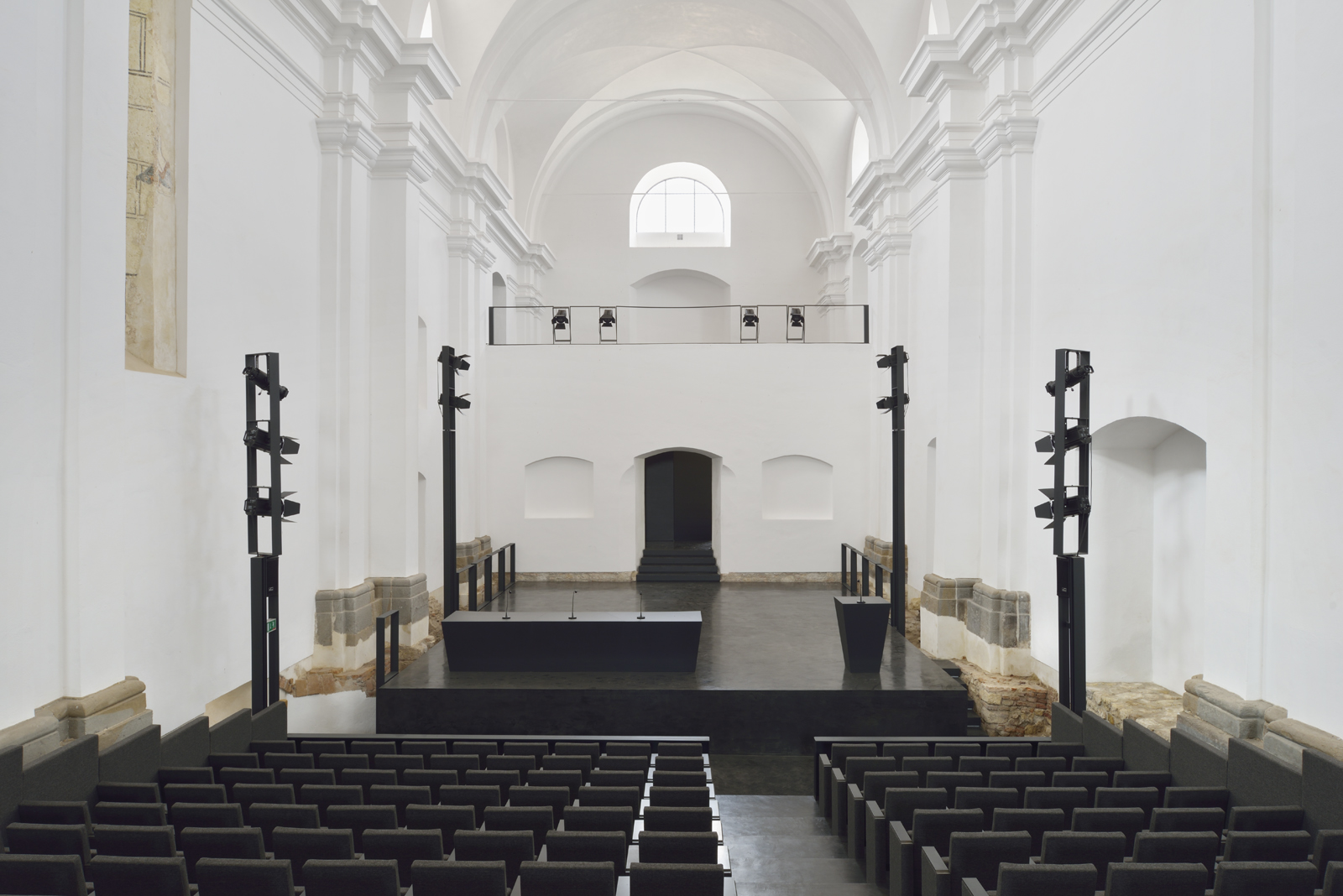
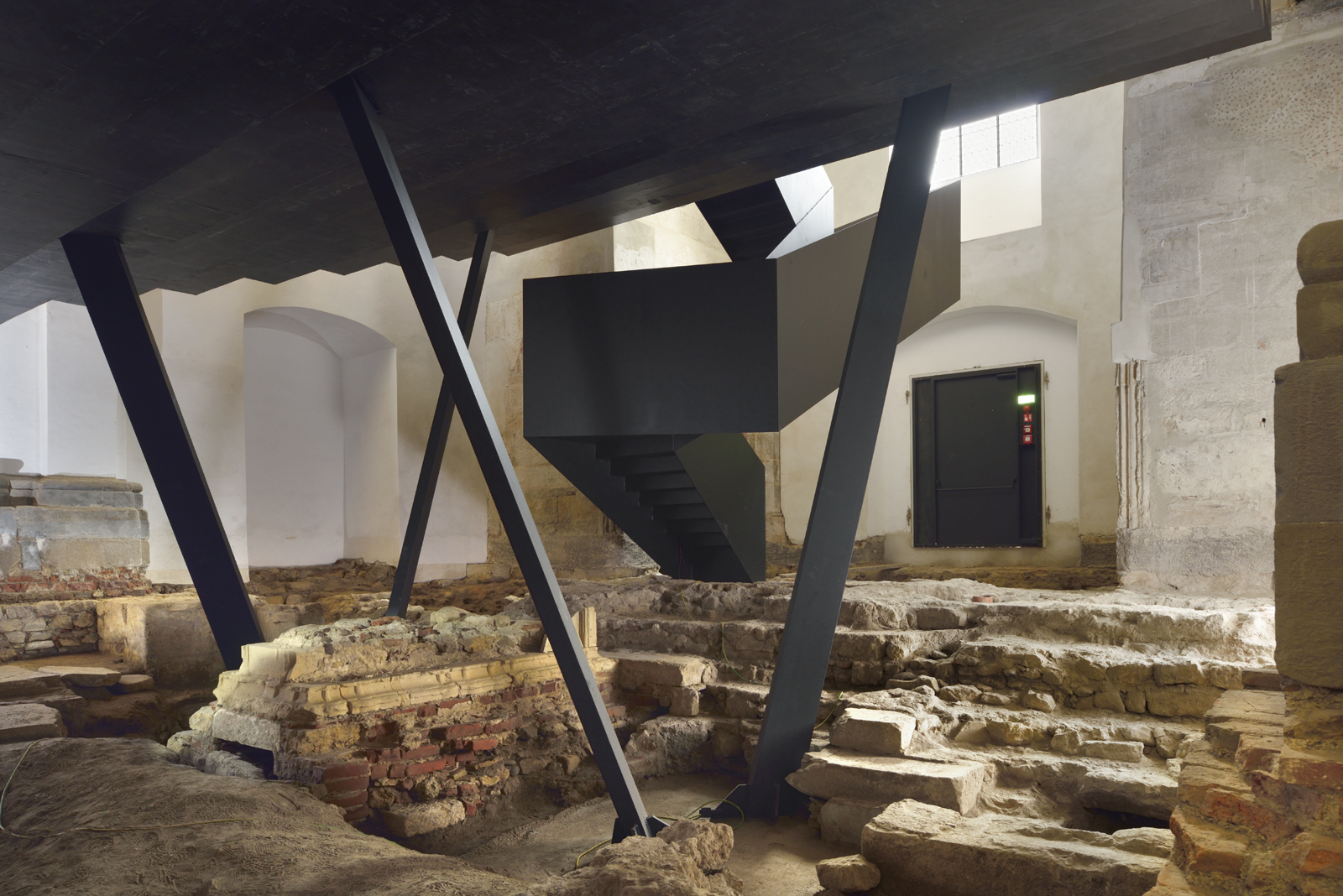
Ptuj Performance Center by Enota, Ptuj, Slovenia | Photos by Miran Kambič
Jury Winner and Popular Choice, 2014 A+Awards, Architecture +Preservation
The firm has also worked on a renovation project and preservation project in Ptuj. The Ptuj Performance Center was once a Dominican monastery that was built 800 years ago. After the monastery was dissolved in the 18th century, over time the structure was adapted to serve as barracks, a hospital, a museum, social housing, and more. Enota wanted to preserve this rich history as they created a performance space in this building.
The main addition was a black floor that connects the new spaces with the old. The firm was mindful not to cause disruption to the original structure and also assured that there was room for changes in the future. This floor also contains all services like heating, ventilation systems and lighting.
Lah believes that understanding the history of a building and creating architecture that is flexible is very important when renovating a building. “We should think of how our buildings will be changed because buildings tend to last much longer than the programs that they were constructed for,” he said.
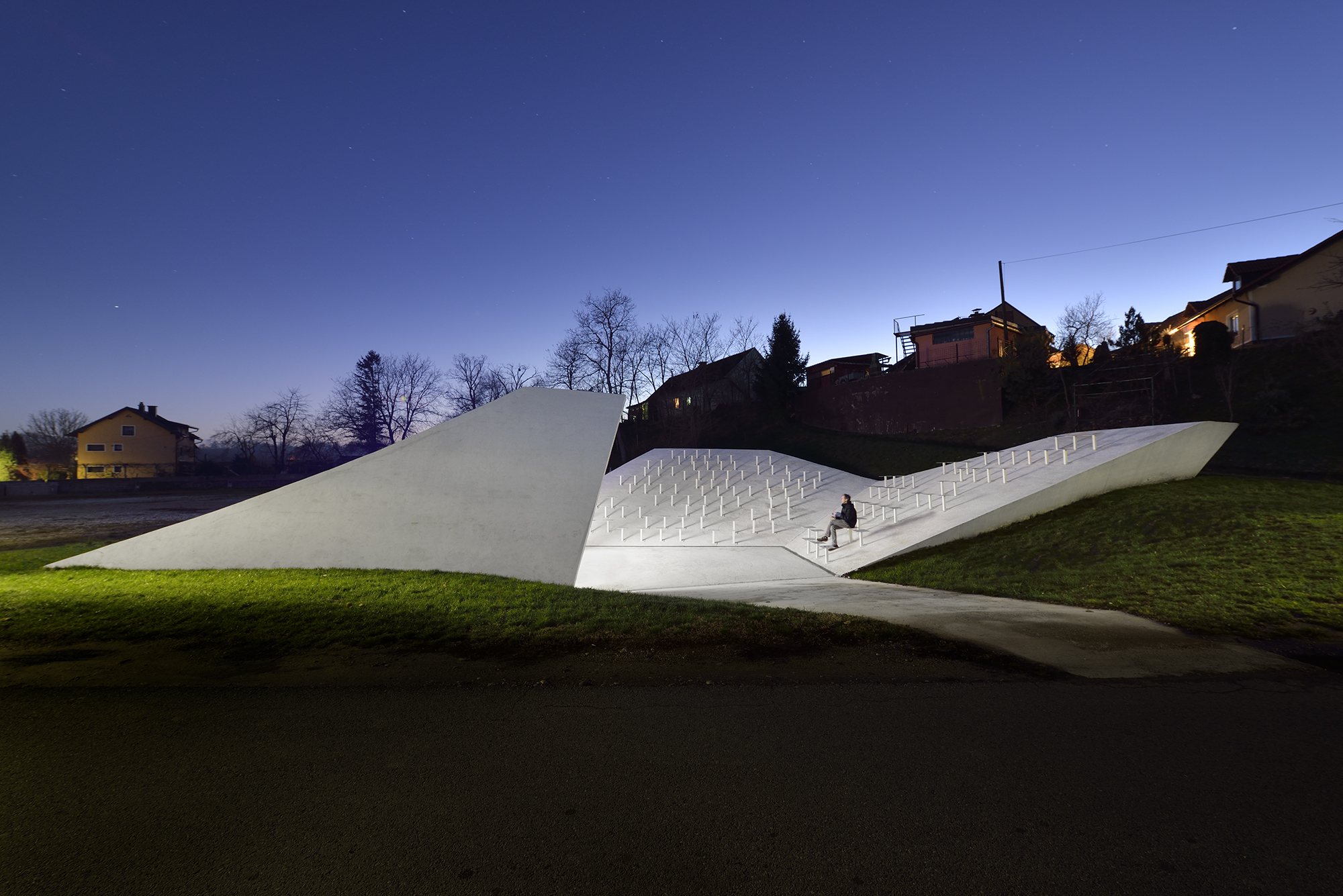
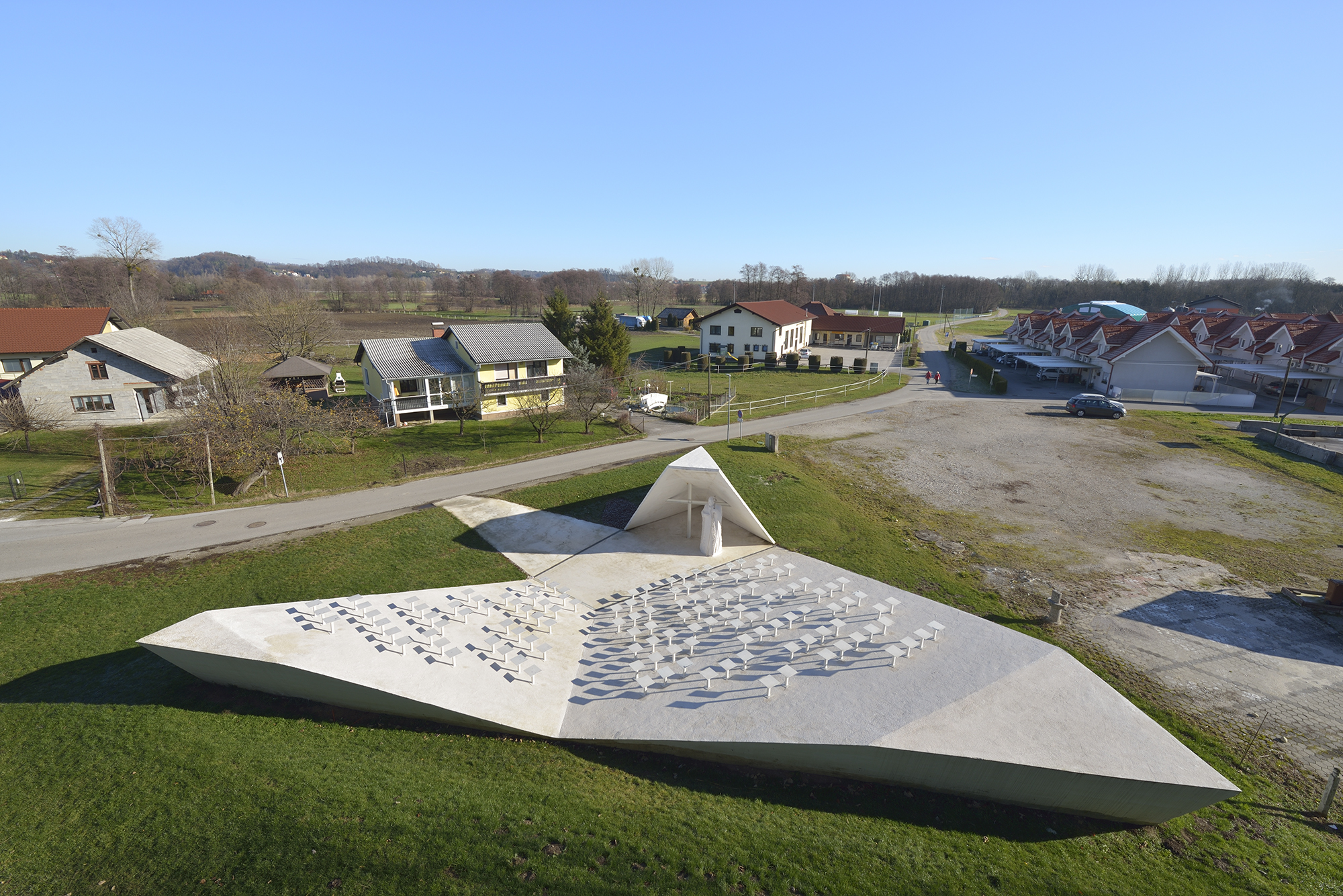
Skorba Village Center by Enota, Skorba, Slovenia | Photos by Miran Kambič
While working on this performance center, the firm was acquainted with a resident from the neighboring town of Skorba. Realizing that the town didn’t have a square or main street for social gatherings, Enota stepped in to help create it. The Skorba Village Center was a community effort where the locals were involved in the fundraising, design process and construction. For this reason, there are no complex details or high-tech mechanisms involved in the design. The white concrete structure contains a sheltered event space and raised seating that is directed towards the stage. The triangular roof almost becomes a part of the overall geometry where all forms resemble flaps of a paper polygon that has been opened up.
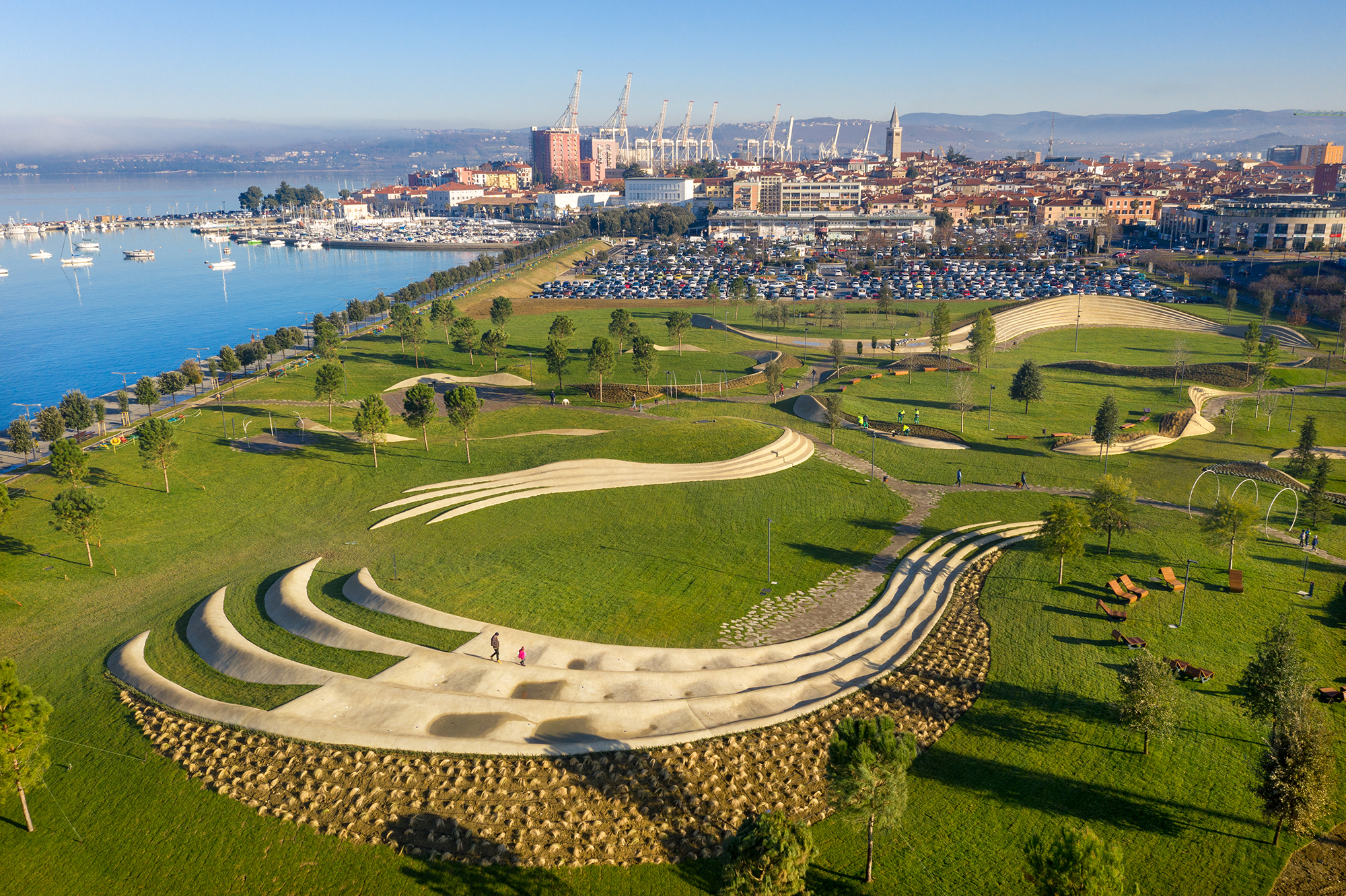
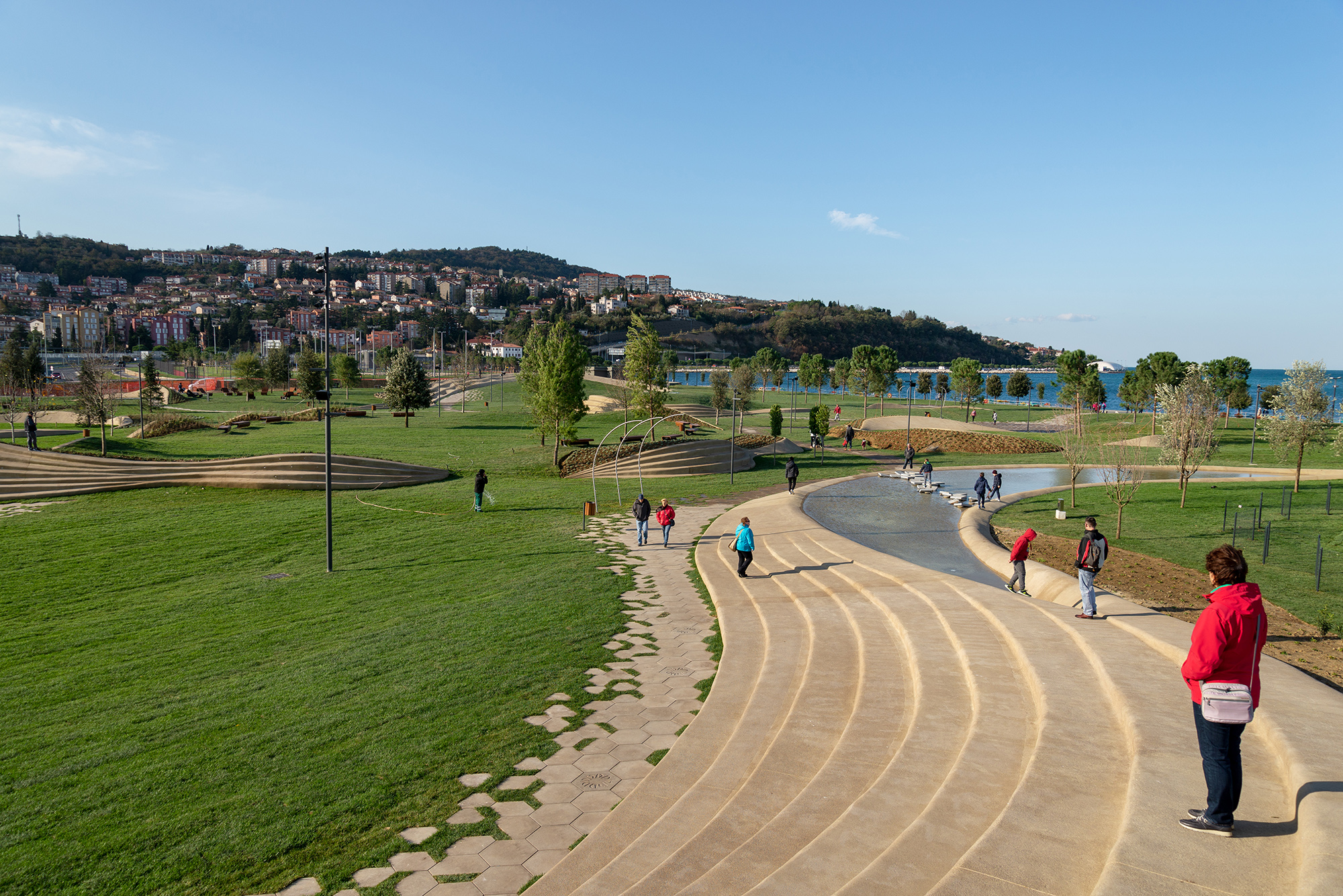
Koper Central Park by Enota, Koper, Slovenia | Photos by Miran Kambič
Apart from hospitality and cultural projects, the firm has been experimenting with landscape projects in recent years. “People were telling us these are your buildings and more and more connected to the natural environment. This is not even the building anymore. This is actually just the environment,” said Lah. “We still think of these arrangements as designing buildings. Like you divide your buildings into different programs, you also devise your areas into different programs. You just don’t cover them so to speak.”
One of their most iconic works in this sector is the Koper Central Park by the coastline. The large area of the park is divided into smaller segments that flow into one another. Low concrete dividers in curved forms carve out areas for functions like a playground, skating arena, reading area, gathering space for bigger events, among others. These partitions also act as obstacle courses for children to climb on. There are no specific designed paths as they wanted to encourage people to explore the space in their own way and leave room for requirements that could emerge in the future.
Having fun with design is very important to the firm. Lah said that students tend to discover a very different side of the business when they enter the profession. The excitement about design can be dampened by other factors like legislation, budgets, permissions, etc. He suggests that young architects should not take themselves too seriously.
He added,”If you do manage to be playful, I think you have a better chance to create something that people will actually embrace naturally.”
Call for entries: The 14th Architizer A+Awards celebrates architecture's new era of craft. Apply for publication online and in print by submitting your projects before the Main Entry Deadline on December 12th!
 Koper Central Park
Koper Central Park  Ptuj Performance Center
Ptuj Performance Center  Skorba Village Center
Skorba Village Center  Termalija Family Wellness
Termalija Family Wellness 


